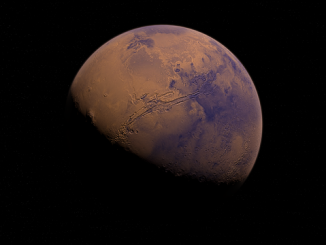
What does the Home Plate plateau on the planet Mars have in common with El Tatio hot springs in Chile? Finger-like structures. What’s significant about that? If the structures were formed in the same way, it suggests that Mars wasn’t always the inhabitable planet that it is.
Back in 2007 when the NASA rover named Spirit was still functioning and roaming on the surface of Mars, it was able to gather white materials which turned out to be made mostly of what we know as silica, a tough glass-like substance. More interestingly, it was also able to capture images of finger-like rock formations on the Home Plate plateau — a region on Mars that scientists believe may have been home to numerous geysers, much like Earth’s Yellowstone National Park.
On NASA’s end, they did not think much of the structures other than being the results of typical Martian erosions. However, Steven Ruff and Jack Farmer, researchers from the Arizona State University (ASU) School of Earth and Space Exploration, could not dismiss the findings just as easily because they found a striking similarity between those Martian structures and those found at a hot springs region in El Tatio. And the deeper they looked, the more they were convinced that they had just discovered one of Earth’s most Mars-like materials.
Between Yellowstone National Park and El Tatio, it’s El Tatio which has conditions that are more comparable with that of Mars. Located at 14,000 feet above sea level, El Tatio has thin, dry air; below freezing temperatures at night; and receives lots of ultraviolet light from the Sun. Just like Mars.
According to the ASU researchers, the silica deposits in El Tatio that were almost identical to the ones found on Home Plate were those that were formed as a result of abiotic or non-biological processes, with some help from microorganisms. On Earth, that’s not really surprising. But on Mars? It strengthens the possibility of what many have suspected and have been hoping for — that life used to exist on Mars.
With this latest information, finding further proof of past life on Mars has gained renewed priority. It’s called looking for “biosignatures” or what NASA defines as objects, substances and/or patterns that might have biological origins. In simple terms, biosignatures are signs that suggest the presence of life, both in the past and in the present.
Right now, the formations at Home Plate show the most promising evidence. However, we might have to wait until 2020 (when the next US rover to Mars will be sent) before we can get clearer answers.
- Bulenox: Get 45% to 91% OFF ... Use Discount Code: UNO
- Risk Our Money Not Yours | Get 50% to 90% OFF ... Use Discount Code: MMBVBKSM
Disclaimer: This page contains affiliate links. If you choose to make a purchase after clicking a link, we may receive a commission at no additional cost to you. Thank you for your support!




Leave a Reply